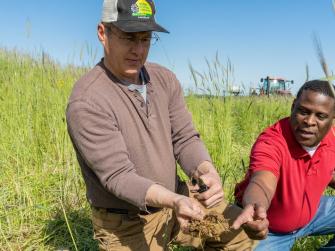How much carbon storage can we expect from cropland soils?
Biophysical and socioeconomic influences on storage potential

Companies and farmers alike are moving swiftly to tap into the growing interest in soil carbon sequestration on croplands. However, the biophysical potential for greenhouse gas mitigation varies across geographies, and farming practices and socioeconomic factors can reduce those amounts.
Download the biophysical constraints white paper PDF
Download the socioeconomic factors white paper PDF
Achieving strong scientific consensus about how much carbon global cropland soils can store is essential for building certainty in voluntary agricultural carbon markets, rewarding farmers for agricultural climate solutions and ensuring that net GHG reductions are durable.
In two new white papers on the realizable magnitude of carbon sequestration in global cropland soils, EDF scientists:
- Describe the state of the science in quantifying the biophysical potential for cropland soil carbon sequestration.
- Identify high-priority research needs for improving the estimates of potential net carbon sequestration in global croplands after agricultural practice changes.
- Review socioeconomic factors that may limit the full potential for soil carbon sequestration and discuss how these might result in different adoption and abandonment of farming practices.
- Recommend four research areas to help establish the funding and policy priorities around carbon sequestration in croplands as a viable pathway for global climate change mitigation.
MEDIA CONTACT
Hilary Kirwan
(202) 572-3277 (office)













